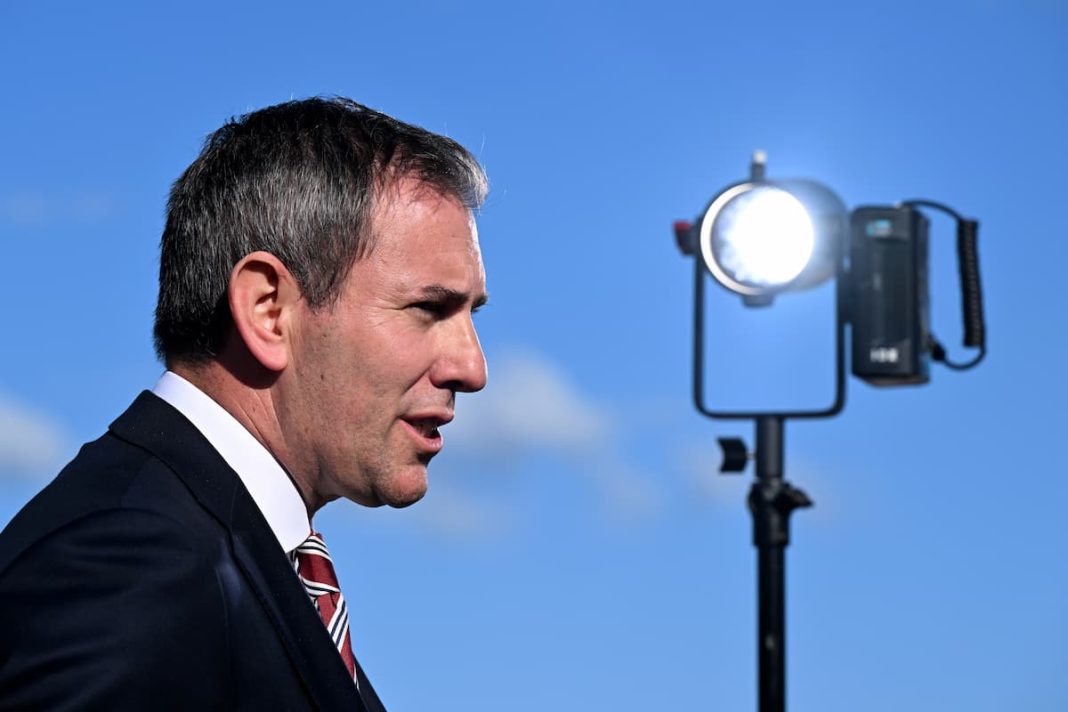Australian mortgage-holders and businesses appear to have dodged another interest rate hike following an inflation reading that takes pressure off the central bank.
Households are still being hit with higher prices for everything from fruit to fuel, along with crippling rents and insurance, but economists agree inflationary pressures are contained enough to keep rates on hold when the RBA meets on Tuesday.
Share prices rose on improved prospects for a “soft landing” and prompted investors to abandon rate hike bets, instead pricing in a 65 per cent chance of a cut by December.
The annual rate of headline inflation did accelerate in June, however, rising to 3.8 per cent, up from 3.6 per cent – the first increase in the consumer price index in 18 months, the Australian Bureau of Statistics said.
Yet a higher June quarter number was expected by the Reserve Bank of Australia and economists, with the headline figure landing broadly as the central bank and consensus thought.
Treasurer Jim Chalmers stressed inflation could “zig and zag on the way down” and highlighted his government’s efforts to help temper inflation.
“We have delivered the first back-to-back surpluses in almost two decades, which the RBA governor has said are helping in the fight against inflation,” he said on Wednesday.
Shadow treasurer Angus Taylor, speaking at a press conference where opposition leaders attacked Dr Chalmers’ record in office, said the government was spending too much.
“The government has had its foot on the accelerator while the RBA has its foot on the brake … if you keep going down this path you wreck the engine,” Mr Taylor said.
But Deloitte Access Economics partner Stephen Smith was optimistic following the June consumer price index, saying it should “put to rest the tired notion the RBA should lift rates”.
“What we have seen today is confirmation that inflation and inflationary expectations are not running rampant,” he said.
The factors still driving inflation, such as rents – pushed higher by housing shortages and fruit prices and rocked by bad weather – were not fixed by higher interest rates, Mr Smith said.
The annual trimmed mean, the central bank’s preferred measure of underlying inflation that strips away volatile items, has come in lower for six consecutive quarters, the economist observed.
The annual trimmed mean moderated to 3.9 per cent in June, down from 4.0 per cent in March.
Slightly higher annual inflation was recorded for goods and services when compared to the March quarter numbers.
“Prices rose for goods such as tobacco, new dwellings, automotive fuel and fruit,” ABS head of prices statistics Michelle Marquardt said, adding annual services inflation continued to be pushed higher by rents and insurance.
EY senior economist Paula Gadsby said mortgage holders could “breathe easy” because it was clear underlying inflationary pressures were not building, as feared.
“Our view remains that the cash rate will at least need to remain restrictive for some time yet,” she said.
The central bank received another important data point for interest rate setting, retail sales, which rose another 0.5 per cent in June to follow May’s 0.6 per cent.
Sales were boosted by shoppers taking advantage of end-of-financial year savings, the ABS said, particularly for discretionary item such as furniture and clothing.



